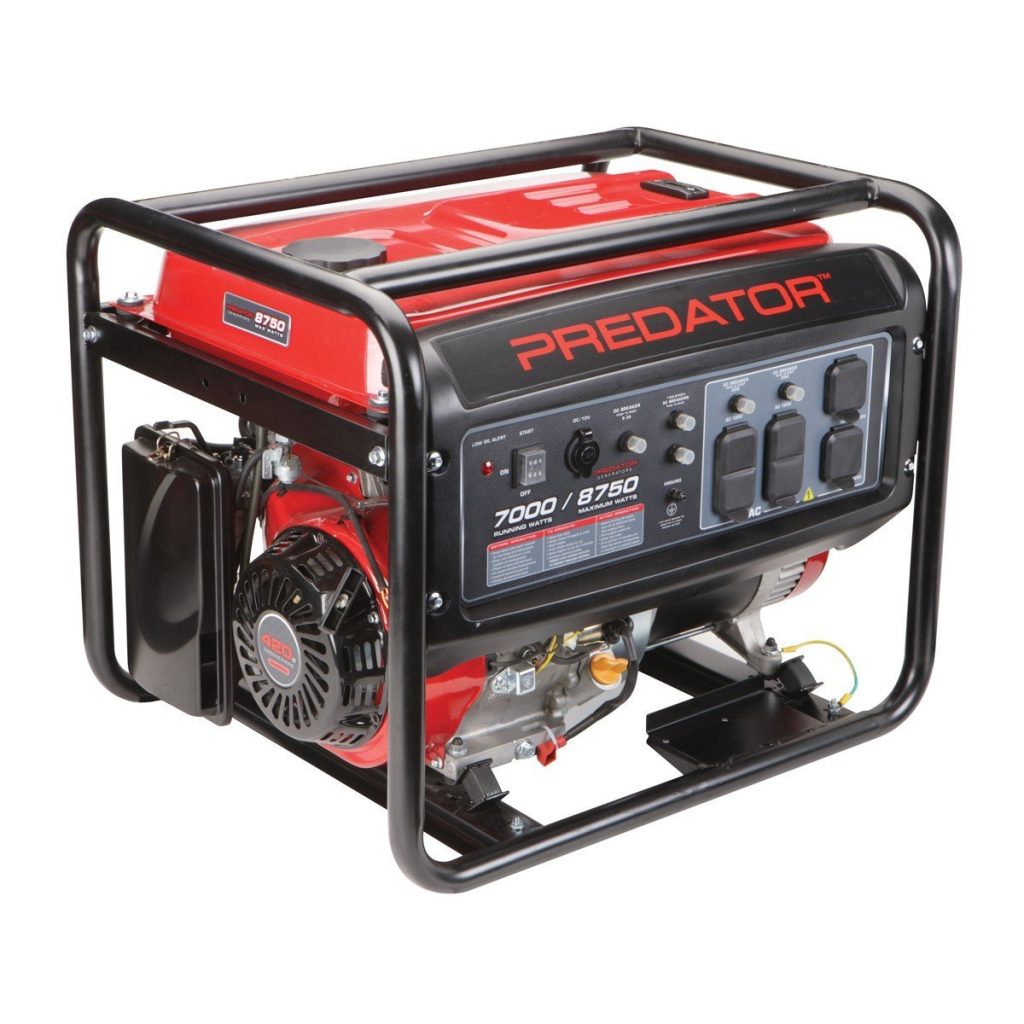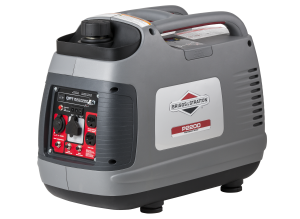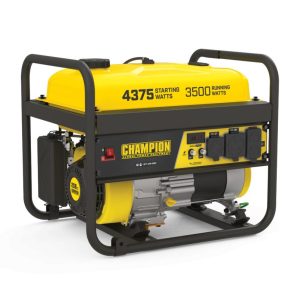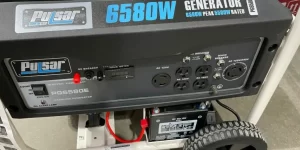Predator Generators: 12 Common Causes of Failure (FIXED)
In times of necessity, your generator is perhaps your only option for electricity. If your generator keeps turning off, I have compiled a checklist of things to look for.
A Predator generator will start but quickly shut off if the fuel tank is empty, the fuel filter is blocked, the carburetor is dirty, the fuel line is clogged, the gas cap is broken, the spark plug is dirty, the ignition coil is broken, the engine oil is low, or the gas is old.
Before attempting any repairs, let the engine cool down and disconnect the spark plug wire. Please observe the Predator’s manual’s suggested safety procedures.

Before diagnosing, repairing, or operating, be sure you’ve read and understood all of the safety recommendations in the equipment’s operator’s manual.If you are unsure about how to proceed or if you lack the necessary expertise or experience, you should seek the assistance of a professional.
Table of Contents
The Predator Generator Turns On, But Quickly Fails And Turns Off
The Predator’s Generator Ran Out of Gas
Obviously, your generator won’t work if the gas tank is empty. There are a few things that can cause you to run out of petrol sooner than usual: a fuel leak, a broken fuel gauge, or simple forgetfulness.
Put the generator on a level surface, that’s the answer. When the generator’s fuel gauge drops to “E,” it’s time to refuel.
Using Outdated Fuel in a Predator Generator
A generator’s fuel system can become clogged with varnish if gas is left in it for extended periods of time. When there is a shortage of fuel, the generator will splutter and eventually stop working.
It’s crucial to run fresh gas and use it all within 30 days after purchase because after that point it starts to degrade.
I realize how challenging this suggestion is. Only during a power outage can you use the generator, and how long it lasts is anyone’s guess.
Because of this, new gas should be treated with a fuel additive before being put into the fuel tank. Sea Foam Motor Treatment is a gasoline stabilizer and moisture remover that can extend the fuel’s useful life.
To maximize fuel efficiency, consider the following:
- Unleaded gasoline having an octane value of at least 87 and no more than 10% ethanol is required for use in 4-cycle engines found in Predator generators. Don’t fill up with gas that has a high ethanol percentage.
- Put gas to use within 30 days.
- Don’t store gas in the open or somewhere it might be exposed to condensation.
- Keep gasoline away from moisture.
- Don’t stock up on more gas than you can use in the next 30 days. If you buy more than this, you may want to stabilize your gas by adding an additive.
Drain used gas into a container for proper disposal. To stabilize and cleanse the fuel system, use new fuel with a fuel additive.
Predator Generator with Blocked Fuel Filter
In order to filter the fuel before it reaches the carburetor, many Predator portable fuel generators have an inline fuel filter installed. The fuel system relies on it to prevent contaminants like dirt and debris from entering the engine.
It is possible for the filter to become clogged with dirt, which would prevent fuel from passing through. If the engine doesn’t get enough fuel, it could die.
In the absence of an inline filter, some Predator generators may have a fuel filter at the fuel tank’s bottom or a small filter installed in a gasoline component or line.
REMEDY: Swap out the clogged fuel filter. If your generator doesn’t have an inline fuel filter, you may want to hire a professional to locate and replace the filter for you.
A Clog in the Predator Generator’s Fuel Line
Fuel flow can be restricted by a number of factors, including a plugged fuel line. To locate a blockage in a fuel line, the fuel flow must be interrupted and restarted while the fuel flow from each segment of the fuel line is measured.
The gasoline line can be disconnected from the generator and carburetor cleaner sprayed into the line to assist break up the obstruction. The next step is to use compressed air to blow through the line and clear out the obstruction.
Bring the line back in. A new gasoline line can be simply installed if you discover the old one is dry and broken, or if you are unable to remove the blockage.
The Predator’s Generator Has a Faulty Fuel Pump
When the carburetor is situated above the fuel tank, your Predator generator will necessitate the usage of a fuel pump. To transport fuel uphill, a pump is needed. A fuel pump isn’t necessary for all generators.
If the fuel pump isn’t working, the generator won’t have enough gas to keep running.
Make sure fuel is reaching the fuel pump’s input port before you start testing the pump. Then, put the carburetor line in a storage container.
Turn on the motor and listen for a continuous or pulsating stream to emerge from the hose.
If the fuel pump is unable to supply fuel to the carburetor at all times, it must be replaced.
Your Predator’s Generator Has a Filthy Carburetor
Carburetor varnish can block the passage of gas and air, preventing the correct mixture needed for combustion in the engine cylinder.
When the engine is unable to acquire the right amount of air and fuel, the Predator generator may sputter and eventually shut down.
If you’ve been using old fuel or fuel with ethanol, you may need to clean your carburetor to get rid of sticky deposits and crusty buildups. Rebuilding or replacing your carburetor may be necessary if it is severely soiled or missing parts.
Predator Generator with Incorrect Choke Setting
When starting a Predator generator with a cold engine, the throttle must be closed to limit airflow. To keep the engine running after it has warmed up, the choke must be moved to its open position.
IF YOUR ENGINE STARTS but immediately shuts off, CHECK TO SEE IF THE CHOKER IS OFF and IN THE OPEN POSITION.
Clogged Air Filter
The air filter serves a crucial purpose in preventing engine wear caused by debris entering the air intake. Because of its significance, this component requires regular maintenance checks.
If you’re like most homeowners, you probably just clean or replace your air filter once a year. If the filter appears to be severely soiled or broken, it should be replaced immediately.
Using the generator in dry, dusty circumstances will increase how often you need to replace it.
The engine will not have enough air to function properly if the filter is not periodically cleaned and replaced. Overheating is a leading cause of irreparable engine damage.
Cleanse a Predator generator foam-style air filter
- Take the filter out of its housing.
- The air filter housing and cover should be cleaned of any lingering debris. Keep the air intake free of debris.
- Check for wear and tear on the foam filter, and replace if necessary.
- Cleaning the filter with soapy water and rinsing it until the water runs clear will determine its condition.
- To dry the filter, simply squeeze it.
- Use an SAE 30 lightweight engine oil for coating the filter. Remove any extra oil from the filter by squeezing it.
- Change the air filter.
- The air filter cover must be reattached.
Cleanse a Predator generator paper air filter:
- Take the filter out of its housing.
- The air filter housing and cover should be cleaned of any lingering debris. Keep the air intake free of debris.
- Examine the paper filter that is used to filter the air. The dirt can be loosened and released from the filter by tapping it. Avoid ripping or folding the paper. If the filter is unclean, torn, or no longer effectively seals the air intake, a new one should be installed.
- To remove dust from the filter, Predator suggests using compressed air.
- Put in a new or freshly cleaned air filter.
- The air filter cover must be reattached.
If you discover that your air filter is clogged, you can clean it by following the steps outlined below. Check the Predator handbook for information on the filter type and cleaning process.
Your Predator Generator Has a Faulty Gas Cap or Fuel Tank Vent
The gasoline tank must have a vent in order to allow air to escape and maintain a constant pressure inside the tank.
A vacuum will create inside the tank if the vent is blocked, preventing fuel from reaching the carburetor. The result is that the generator won’t be activated.
Use a pressure gauge to detect vacuum buildup in the tank to see if the fuel tank vent is to blame for your starting issue.
In the absence of a pressure gauge, it is possible to start the generator by releasing air from the tank and turning the engine over.
You may have an issue with the fuel tank vent if the engine starts but then dies again after you tighten the gas cap and let it run for a bit.
When the fuel tank stops venting properly, you can fix the problem by replacing the gas cap or the rollover valve, depending on the type of your Predator.
Your Predator’s Generator Has a Grimy Spark Plug
The spark plug was responsible for creating the spark that kicked off the engine, so if it’s unclean or damaged, the generator can sputter and die.
REMEDY: Take off the spark plug and inspect it. Replace the spark plug if the tip has turned a very dark color, the electrode is worn, or the porcelain is cracked.
If it seems in good shape, remove the spark plug wire and clean it with a wire brush before checking the electrode gap and reattaching it. The generator could stop working because of a loose wire or a misaligned spark plug gap.
Your Predator’s Generator Has a Faulty Ignition Coil
Ensure that your spark plug is in good shape before you start looking for a faulty ignition coil. The engine cannot be started without the ignition coil sending voltage to the spark plug.
A non-firing spark plug or faulty ignition coil will prevent the engine from starting.
The problem can be solved by using an ohm meter to test the ignition coil’s continuity. Replace the ignition coil if you notice a break in continuity.
Your Predator Generator’s Engine Has Low Oil
Sometimes generators will run for a while and then shut off without warning. The low oil warning light should be checked.
Predator is equipped with a sensor that will cause it to stop down if the oil level drops too low, protecting the engine from harm. It won’t turn back on until the oil level in the engine is fixed.
It may be infuriating if it refused to keep running. The good news is that the generator has turned off.
If you’re running low on oil and you keep driving, you could do serious damage to your engine from the increased friction and heat. When the engine gets too hot, the components can melt.
The generator must be set on a level surface before the oil level can be checked. Take off the oil fill cap and use a dry towel to remove the oil from the dipstick.
Do not tighten the cap on the oil fill tube after reinserting the dipstick. Take it out and check the oil level using the dipstick. Check that it’s within the entire range shown on the dipstick.
If it isn’t, you should either drain some oil or add some oil to get the engine to the right level.
If you check the oil level and find it to be where it should be, yet the low oil sensor continues to illuminate, you may have a malfunctioning sensor. The generator should be taken to a service center for maintenance.







